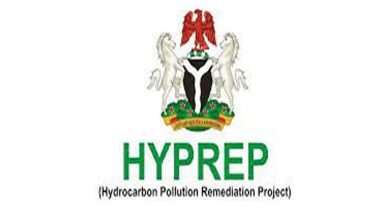Protecting Water Systems
Ugo Aliogo examines a report by Minority and Indigenous Trends which stated that water justice cannot be attained unless the communities that protect water systems from the threats of extractivism, overuse and pollution are prioritised in the international arena
The UN General Assembly, 10 years ago, adopted a resolution recognizing that clean water and sanitation are basic human rights. Not everyone is one the same page as there are moves to commodify water on Wall Street, This, expert ssid, directly threatens human rights and puts billions of people in crisis. Water is a living cycle that connects biosphere and atmosphere. Forests, rivers and oceans are interwoven by the water cycle, keeping life on this planet in a state of constant regeneration, renewal and recycling.
The report with focus on water stated that sustainability and justice are part of the same ecological process, and everyone is a citizen of the earth. It added that everyone should participate in the water cycle, “and our bodies carry water, and make us all participants in the endless movement, flow and distribution of life across the planet.”
The report further revealed that when the powerful and dominant economic forces of society take more than their earth share, ecosystems, plants, animals, women, indigenous communities and minority groups are deprived of their share of water for life and livelihoods, leaving entire communities to carry the heavy burden of water poverty.
The report hinted that women in communities across the world fetch and carry water on a daily basis. Extraction and pollution of local water systems increase their burden.
The report revealed that the the World Bank has sought to impose privatisation of water on the global South as part of their structural adjustment programmes since the 1990s, adding that one of the most infamous tales of corporate greed concerning water occurred in Cochabamba, Bolivia, in what are now known as the Cochabamba Water Wars.
It explained that in the semi desert region of the high Andes, water sources are vulnerable and precious, noting that in 1999 the World Bank recommended privatisation and a monopoly over Cochabamba’s municipal supply through a concession to International Water, a subsidiary of the US-owned Bechtel Corporation.
The report averred that in October 1999, the first water bill was passed granting the privatization of Cochabamba’s water, adding that privatization led to such high prices that people in this deprived region of Bolivia found themselves spending up to 20 percent of their monthly wages on water bills.
According to the report, “Privatization led to such high prices that people in this deprived region of Bolivia found themselves spending up to 20 per cent of their monthly wages on water bills. In January 2000, a citizens’ alliance called Coodinadora de Defensa del Agua y de la Vida (Coalition in Defence of Water and Life) was formed. The alliance shut down the city for four days through mass mobilization. A Cochabamba Declaration was subsequently issued. “Protests continued until the privatization law was annulled in April 2000. Contracts were terminated, and new water resource laws were drafted following citizens’ participation.
“In January 2000, a citizens’ alliance called Coodinadora de Defensa del Agua y de la Vida (Coalition in Defence of Water and Life) was formed. The alliance shut down the city for four days through mass mobilization. A Cochabamba Declaration was subsequently issued. Protests continued until the privatization law was annulled in April 2000. Contracts were terminated, and new water resource laws were drafted following citizens’ participation.
“Back in India, the World Bank imposed a water privatization project in the city of Delhi in 2001, only months after the Cochabamba Declaration. The consultants appointed for this project were PwC (Price Waterhouse Coopers). Waters from the sacred River Ganga were to be privatized and sent to the Suez-Degrémont water plant at Sonia Vihar. A water democracy movement soon came together to connect the people displaced by the Tehri dam and farmers whose fields are irrigated by the Ganga canal in the slums of Delhi.
“The examples from Bolivia and India are not isolated ones, and that the unjust privatization of water in water-stressed countries is a global pattern of grotesque proportions, as the case studies of Chile, Georgia, Iran and Libya in this report clearly illustrate. The Cochabamba Water Wars of 2000, and the Delhi Water Rallies of 2001, are far from over. In fact, the struggle to secure water justice for communities, especially those belonging to minorities and indigenous peoples, has intensified all around the world.
“Thus, according to a recent UN report on the state of the world’s water, ‘over the last few decades, the water crisis has deepened on a planetary scale. 75 per cent of available freshwater is now used for chemical- and water-intensive agriculture, which also leaves rivers and lakes polluted with nitrates and pesticides.’ Phosphorus pollution generated by intensive agriculture and run-off has led to major environmental crises in water systems across the world – Lake Erie in the United States and the River Wye in the United Kingdom being two iconic examples of destruction due to industrial agriculture.”
UN Report
A recent UN report on the state of the world’s water, ‘over the last few decades, posited that the water crisis has deepened on a planetary scale, noting that 75 percent of available freshwater is now used for chemical- and water-intensive agriculture, which also leaves rivers and lakes polluted with nitrates and pesticides.’
The report said phosphorus pollution generated by intensive agriculture and run-off has led to major environmental crises in water systems across the world – Lake Erie in the United States and the River Wye in the United Kingdom being two iconic examples of destruction due to industrial agriculture.
The report further remarked that more than 5 billion people could suffer water shortages by 2050 due to climate change, increased demands and polluted supplies.
It stated, “In the name of the Green Revolution or mass production of foods to satisfy global markets and consumption, lands once known to be abundant in water are being transformed into areas of critical water stress. Punjab, the land of five rivers, is one of many examples of this. Globalization has led to the export of water from the global South, further intensifying the water crisis worldwide.”
The report remarked that Lake Chad in Central Africa has shrunk greatly as 80 per cent of the water that recharges the lake is being diverted to irrigate commercial crops.
It noted that the consequence is growing water conflicts, as the Niger case study in this report vividly shows, pointing out that operating across the four countries that share the lake, Cameroon, Chad, Niger and Nigeria, Boko Haram is an example of how the destruction of water sources can directly or indirectly cause the breakdown of civil society and the rise of violent extremism.
In his remarks, the former Executive Secretary of the UN Convention to Combat Desertification (UNCCD), As Luc Gnacadja, stated, “The depletion of Lake Chad has helped create the conditions for conflict. In much of northern Nigeria, Muslim herders are in competition with Christian farmers for dwindling water supplies. The so-called religious fight is about access to vital resources. It is not just about Boko Haram. In the Sahel belt, you will see almost the same challenge in Mali and in Sudan. Furthermore, men who were or would have been gainfully employed as farmers, fishermen, fish sellers and pastoralists have now been conscripted into Boko Haram, with many of them participating in the deadly night raids of the terrorist groups.”
Ogoni Oil Pollution Crisis
Once a culturally rich and biodiverse region, Ogoniland is now refer to as one of the most ecologically degraded places on earth.
Speaking on the Minority and Indigenous Trends 2023 report, the Senior Lecturer and Visiting Scholar, University of Leeds, Dr. Mercy Ette, disclosed that the level of pollution by petroleum hydrocarbons has penetrated deep into the soil, surface and groundwater in the form of forever chemicals, that is, chemical pollution that is not biodegradable, which has taken and will continue to take a toll on the quality of life of people for generations to come.
She also noted that the UN Environment Programme (UNEP) Assessment Report on Ogoniland (2009–11) clearly stated that due to the effect of petroleum hydrocarbon pollution, there is reduced life expectancy for the average Ogoni person, currently pegged at 45 years.
She espoused that despite a long-standing claim for sovereignty over ancestral lands and compensation for damages caused by oil extractors, Ogoni people remain marginalized by the Nigerian state.
Ette revealed that although Shell Petroleum Development Company (SPDC), the largest stakeholder in Nigeria’s oil industry, was forced to halt its operations in Ogoniland in 1993 following the passing of a ‘persona non grata’ order on SPDC and its contractors, “its legacy of pollution is still felt as major pipelines criss-cross Ogoniland and intermittently spew out crude oil.”
According to her, “Leaks from abandoned, ageing and dilapidated infrastructure have led to ongoing environmental pollution for decades. Recently, the activities of artisanal refiners have exacerbated the level of environmental pollution in the area. The formation of the Movement for the Survival of the Ogoni People (MOSOP) in 1990 came as a result of political marginalization, lack of control of Ogoni economic resources, under-development and ecological degradation (part of which concerned oil spills, the major challenge for Ogoni people at the time).
“Before active oil exploration in Ogoniland was stopped, Ogoni oil contributed about 60 per cent of total oil exports from Nigeria and was also rated the best kind of oil, ‘sweet crude’. ‘Ogoniland is a sorry situation. Much of the old pollution remains, especially in the case of complex sites that are yet to be remediated. This includes communities at Ogale where UNEP found groundwater to have benzene at 900 times above World Health Organization standards. Potable water remains a huge challenge in much of Ogoniland.’ To make matters worse, the current spate of artisanal refining in the land has contributed greatly to environmental degradation. The incomplete combustion of hydrocarbons has led to an increase in black soot with its resultant harmful effects on water quality and the environment as a whole.”
Ette revealed that UNEP was commissioned to carry out an environmental assessment of Ogoni communities and make recommendations, stating that their recommendations called for emergency measures, as well as medium- and long-term implementation strategies that would lead to the clean-up, remediation and restoration of the land.
She added that in particular, UNEP called for a response to high levels of benzene, a known carcinogen, in the community’s sources of drinking water.
She argued that HYPREP and the ongoing success of the legal battles against Shell are evidence that positive changes are happening in Ogoniland, “and that the fight by the Ogoni people to remediate the damages caused by the oil extraction and by the Nigerian state as co-responsible actors in this ecology war, may yet lead to environmental justice for the communities and the waters of this land blighted by oil production.”
Continuing, she said: “The Hydrocarbon Pollution Remediation Project (HYPREP), a government agency set up in 2017 to clean up the Niger Delta, is currently prioritizing provision of potable water in Ogoniland. Six contracts were awarded in March 2021 for water schemes that will provide potable water to the communities. If the contractors deliver these projects, Ogoni people may eventually regain access to safe drinking water.
“However, after two years, not a single source of potable water is to be found anywhere in Ogoniland, only gigantic water infrastructures without a drop of water in them. In addition to the provision of drinkable water, HYPREP has other mandates which include: remediation of soil, groundwater and swamps; provision of sustainable means of livelihoods; public health assessments; restoration.”
[ThisDay]



